 W
WAawat pauni is a traditional Punjabi gathering of peasants and farm workers to harvest crops collectively, and was popular during the harvesting period around Vaisakhi.
 W
WThe All India Fine Arts and Crafts Society (AIFACS) is an independent arts organisation in India, founded in Delhi in 1928. In the decade after Indian independence, many of its functions were transferred to three national academies: Lalit Kala Akademi, Sangeet Natak Akademi and Sahitya Akademi for the fields of visual arts, theatre arts and literature.
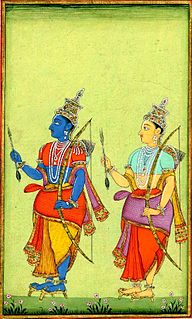 W
WIn Jainism, Balabhadra or Baladeva are among the sixty-three illustrious beings called śalākāpuruṣas that are said to grace every half cycle of time. According to Jain cosmology, śalākāpuruṣa are born on this earth in every Dukhama-sukhamā ara. They comprise twenty-four tīrthaṅkaras, twelve chakravartins, nine balabhadra, nine narayana, and nine pratinarayana. Their life stories are said to be most inspiring. According to the Jain puranas, the Balabhadras lead an ideal Jain life.
 W
WPambaram பம்பரம், Pambaram പമ്പരം, Buguriಬುಗುರಿ, Lattu لٹو , Bongaram బొంగరం, Latim লাটিম is a traditional throwing top used mainly in India and Bangladesh. In Telangana and Andhra Pradesh, its name is "Bongaralu Aata". This game can be played by all age group.
 W
WThe Bhil languages are a group of Indo-Aryan languages spoken in 2011 by around 10.4 million Bhils in western and central India. They constitute the primary languages of the southern Aravalli Range in Rajasthan and the western Satpura Range in Madhya Pradesh, northwestern Maharashtra, and southern Gujarat. According to the 52nd report of the commissioner for linguistic minorities in India, Ministry of Minority Affairs, Bhili is the most commonly spoken language of the union territory of Dadra and Nagar Haveli constituting 40.42% of its total population. Bhili speakers are also significant in the states of Gujarat (4.75%), Madhya Pradesh (4.93%) and Rajasthan (4.60%).
 W
WBhili is a Western Indo-Aryan language spoken in west-central India, in the states of Rajasthan, Gujarat, Maharashtra, and Madhya Pradesh. Other names for the language include Bhagoria and Bhilboli; several varieties are called Garasia. Bhili is a member of the Bhil languages, which are related to Gujarati and Rajasthani. The language is written using the Devanagari script.
 W
WBiba Apparels is an Indian fashion brand for women and girls founded by Meena Bindra in 1988 from her home in New Delhi, India. It has more than 150 brand outlets and 225 multi-brand outlets. Biba recorded sales of INR 600 crore in 2014-15.
 W
WBusu Dima is an annual cultural festival celebrated by the Dimasa Kachari tribe of India. It is the biggest harvesting festival. It is celebrated after the completion of grain harvest in different villages. The festival is usually organized in January.
 W
WCharpai, Charpaya, Charpoy, Khat or Manji is a traditional woven bed used across South Asia. Regional variations are found in Afghanistan and Pakistan, North and Central India, Bihar and Myanmar. It is also known as khaat, khatia, or manji, and as manjaa in Punjab.
 W
WDhatki, also known as Dhatti or Thari, is one of the Rajasthani languages of the Indo-Aryan branch of the Indo-European language family. It is most closely related to Marwari.
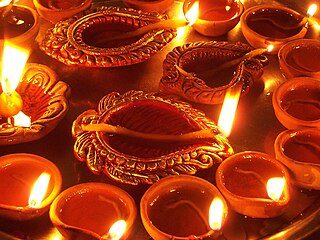 W
WA diya, diyo, deya, divaa, deepa, deepam, or deepak is an oil lamp usually made from clay, with a cotton wick dipped in ghee or vegetable oils. Diyas are native to the Indian subcontinent often used in Hindu, Sikh, Jain and Zoroastrian religious festivals such as Diwali or the Kushti ceremony.
 W
WGajavidala is a motif in the architecture of India that depicts a lion overpowering an elephant.
 W
WA Gajra is a flower garland which is worn by women in India during festive occasions, weddings or as part of everyday traditional attire. They are made usually of varies types of jasmine flowers but rose, crossandra and barleria are also widely used in gajras. It can be worn both on the bun and with the braid coiling. Women in India usually wear them with traditional attire. It is also worn on the wrist by women in India mainly during festive occasions and weddings.
 W
WGodadi is a Gujarati word for a blanket. It is a special kind of blanket, embroidered and made by patching various pieces of cloth. Godadi used to be handmade by housewives from Gujarat, especially from the Kutch district. Today in Gujarat, the "Godadi" word is taken as a general term for blanket that is available in the supermarkets and shopping malls. However, people who know the "Godadi" word will always picture embroidered cloth that is used as a blanket.
 W
WThe Hastividyārnava, written by Sukumar Barkaith, is one of the best known illustrated manuscripts of Assam. Commissioned under the patronage of King Siva Singha and his queen consort Phuleswari, it deals with the management and care of elephants in the royal stables.
 W
WJhoti chita is a traditional Odia white art mostly shown in rural areas of Odisha. It is made from rice paste and with a piece of cloth surrounded with a stick is used to create beautiful patterns. People also use their bare fingers to make jhoti chita. They can be created over walls and on floors.
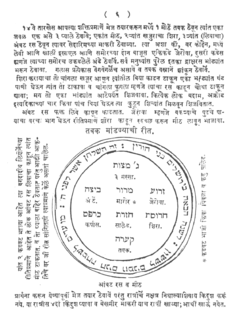 W
WJudeo-Marathi is a form of Marathi spoken by the Bene Israel, a Jewish ethnic group that developed a unique identity in India. Judæo-Marathi is, like other Marathi, written in the Devanagari script. It may not be sufficiently different from Marathi as to constitute a distinct language, although it is characterized by a number of loanwords from Hebrew and Aramaic as a result of influence from the Cochin Jewish community, Judæo-Malayalam and Portuguese and also some influence from the Urdu language. It has some linguistic features in common with various Jewish languages, developed by Jewish communities in widely disparate places in times, which are also variants of a local language with loanwords from Hebrew and Aramaic.
 W
WKala Academy is a prominent cultural centre run by the Government of Goa, in Goa, India. Situated at Campal, Panjim, it is registered as a society, and was started in February 1970. The building was designed by Charles Correa. It plays the role of being an "apex body to develop music, dance, drama, fine art, folk art, literature, etc. and thereby promote (the) cultural unity of Goa."
 W
WKannada Sahitya Sammelana is the premier gathering of writers, poets and kannadigas. It is held with the aim of preserving and developing Kannada language, its literature, arts, culture and music. It was started in 1915 by H. V. Nanjundaiah and held at Bangalore for the first time. It used to be inaugurated by prominent writers and poets from 1915 to 1948. Since then it has been inaugurated by the Chief Minister of Karnataka. The Kannada Sahitya Parishat is responsible for holding the gathering.
 W
WKasayapahuda is one of the oldest canonical text of the Digambara Jains. Another oldest canonical text, the Shatkhandagama was written about the same time. Both these texts are held in high esteem by the Digambaras. Kasaya (passions) form the subject matter of Kasayapahuda.
 W
WKerala Lalithakala Academy for Fine Arts is an autonomous body which was established in 1962 to promote art and artistic heritage, based at Thrissur in Kerala. Nemom Pushparaj is the newly appointed chairman of Kerala Lalitha Kala Akademi.
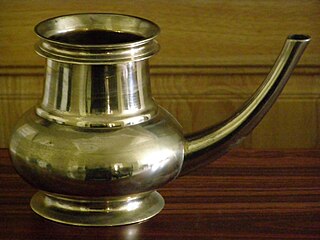 W
WKindi is a type of a pitcher usually found in old houses in Kerala and other parts of India.
 W
WKota Doria or Kota Doriya is the name of a light weight fabric made of tiny woven squares (khat) which is still hand woven on traditional pit looms in Kaithoon near Kota in Rajasthan and in some of the surrounding villages. Kota Doriya Sarees are made of pure cotton and silk and have square like patterns known as khats on them. The chequered weave of a Kota sari is very popular. They are very fine weaves and weigh very less.
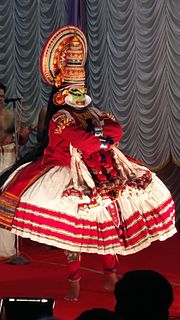 W
WKottakkal Chandrasekharan was a senior Kathakali artiste known for his portrayal of the virtuous pachcha and anti-heroic Kathi roles in the classical dance-drama from Kerala in south India. Born at Naduvattam near Pattambi in Palakkad district in 1945, he was a prominent disciple of Padma Shri Vazhenkada Kunchu Nair and Kottakkal Krishnankutty Nair. His father was A.M. Kumaraswami Bhattathiripad and mother was P.V. Parukkutty Warassiar.
 W
WSadanam Krishnankutty is a cultural artist and a popular performer of Kathakali, a unique classical dance-drama form of Kerala, South India. A recipient of Kerala State Kathakali award and Kalamandalam fellowship, he is reputed for his skill in donning a wide range of characters in his acts. He received the Sangeet Natak Akademi Award in 2007.
 W
WA kumbha is a type of pottery in India. Traditionally, it is made by Kumbhars, also known as Prajapatis.
 W
WKumki or Koomkie is a term used in India for trained captive Asian elephants used in operations to trap wild elephants, sometimes to rescue or to provide medical treatment to an injured or trapped wild elephant. The term may be more specifically applied to trained female elephants used as decoys. Kumkis are used for capturing, calming and herding wild elephants or to lead wild elephants away in conflict situations. The word is derived from Persian kumak which means "aid" and is in wide usage from Bengal to Tamil Nadu by mahouts.
 W
WThe Madisar or Koshavam is a typical way in which the sari is worn by Tamil Brahmin women. The sari and the tying style dates back to ancient India, at least as far back as the period between 2nd century BC to 1st century AD when the antariya and uttariya garments were merged to make a single garment. This style of tying the saree is the "koshavam" style,. Tamil Brahmin women are required to use this style after their marriage. Different communities have evolved different sari styles from the original koshavam style, that requires more material - nine yards. Extant nine-yard sari styles include the nauvari of Maharashtra, the Kannada drape, the Telugu Brahmin style. The name Madisari is however typically associated with Tamil Brahmins, with two sub-styles, the Iyer kattu (tie) and the Iyengar kattu (tie). Today, madisar is hardly worn as daily wear, although women do drape the madisar style on select festive occasions and religious ceremonies. The madisar requires a nine-yard sari to wear it, unlike the current modern version of sari wearing style which needs 6 yards. Both Iyer and Iyengar Brahmins are supposed to wear madisars at ceremonial/ religious occasions, such as the wedding ceremony, the Seemantham, all religious ceremonies, Puja, and death ceremonies.
 W
WMagh is the tenth month in the Bengali calendar. This is the last month of the two months of winter season.
 W
WMahapurana (महापुराण) or Trishashthilkshana Mahapurana is a major Jain text composed largely by Acharya Jinasena during the rule of Rashtrakuta ruler Amoghavarsha and completed by his pupil Gunabhadra in the 9th century CE. Mahapurana consists of two parts. The first part is Ādi purāṇa written by Acharya Jinasena. The second part is Uttarapurana which is the section composed by Gunabhadra.
 W
WMaithili Music is one of the most ancient types of music in the Indian subcontinent. It originated from Mithila region of the Indian subcontinent, which is now divided between India and Nepal. No one knows exactly when Maithili Music came into existence, probably due to the length of its history, but its age indicates that it might have helped other music develop and flourish in India and Nepal. Although Maithili music is usually played by classical instruments, it has been modernized and now uses various modern instruments. Some significant contributors to this music style are Maha Kavi Vidyapati Thakur, Udit Narayan Jha, Sharda Sinha. and new sensation Maithili Thakur. The region's folk songs are associated with the various events in the life of an ordinary person.
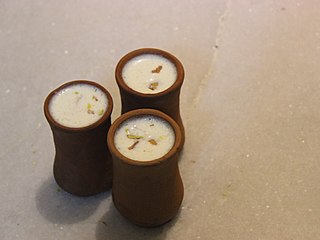 W
WMatki is a Hindi word used for an earthen pot. It is used all over the Indian subcontinent, as a home "water storage cooler". It has been in use since ancient times and can be found in houses of every class.
 W
WMithqāl is a unit of mass equal to 4.25 grams which is mostly used for measuring precious metals, such as gold, and other commodities, like saffron.
 W
WNagarvadhu or Nagar Vadhu was a tradition followed in some parts of ancient India.
 W
WNelliyode Vasudevan Namboodiri or Nelliyod Vasudevan Namboodiri is a Kathakali artiste, noted primarily for his vibrant portrayal of the evil chuvanna thaadi roles of the classical Kathakali dance-drama from Kerala in south India.
 W
WNilavilakku is a traditional lamp used commonly in Kerala as well as in Tamil nadu. The traditional lamps which is lit during every auspicious occasions; in temples before the worship starts; at the official and unofficial functions.
 W
WA palampore or (Palempore) is a type of hand-painted and mordant-dyed bed cover that was made in India for the export market during the eighteenth century and very early nineteenth century. Only the wealthiest classes could afford to buy palampore; therefore, the few examples that have survived are often quite valuable today. Palampore were primarily exported to Europe and to Dutch colonists in Indonesia and what was then called Ceylon.
 W
WKalamandalam Vasu Pisharody is a leading Kathakali artiste known for his restrained portrayal of character roles in the classical dance-drama of Kerala in south India. A frontline disciple of Padma Shri Vazhenkada Kunchu Nair, he excels in virtuous pachcha, anti-hero Kathi and the semi-realistic minukku roles alike. Nalan, Bahukan, Arjunan, Bhiman, Dharmaputrar, Rugmangadan, Narakaasuran, Ravanan, Parashuraman and Brahmanan are his masterpieces.
 W
WPrathamastami is a rite held in Odisha and parts of south-western West Bengal for the life and prosperity of the eldest child who is offered a lighted lamp ovation by the senior female relatives followed by elaborate rituals during which the Mantras are recited. The celebration falls on the dark half eighth day - Ashtami - of the month of Margasira according to the Odia calendar, occurring after the eight day of Kartik Purnima. The ritual involves Aarati of the eldest child by mother and relatives in which the maternal uncle sends the items necessary for the rituals, and Ganesha, Shashti devi and the family deity are worshipped. The main delicacy of the day is Enduri Pitha. This day is also known as Saubhagini Ashtami, Kaal Bhairav Ashtami and Paap-nashini Ashtami.
 W
WIn India, a punkah wallah or punkahwallah is a manual fan operator. A punkah is a type of ceiling fan used in the Indian subcontinent before the electric fan. The punkhawallah was the servant who worked it, often using a pulley system. The word pankha originated from pankh, the wings of a bird which produce a draft when flapped.
 W
WRigwnai/Rinai is a wrap-around worn by Tripuri women.
 W
WA Shalu is a regional variant of the sari from Banaras (Varanasi), India. It is one of many types of saris and differs in the fact that it is the end result of combining Paithani fabric and Banarasi fabric. Paithani, named after the Paithan town in Aurangabad Maharashtra, is made from very fine silk and is characterized by borders of an oblique square design, and a pallu with a Peacock design. Banarasi, also known as Banarasi Silk, is a fine variant of Silk that originates from the city of Varanasi in Uttar Pradesh, India. One of the biggest differences with the Shalu Sari, in comparison to others, is that it is completely embellished at the base with what is called "jari" motifs.
 W
WA shamiana is an Indian ceremonial tent, shelter or awning, commonly used for outdoor parties, weddings, feasts etc. Its side walls are removable. The external fabric can be plain, multicolored or patterned. The four corners are supported by wooden poles. The history of the shamiana dates back to the Mughal era.
 W
WSikki grass crafts are various handicrafts that are made from a special kind of grass known as sikki found in Bihar and Uttar Pradesh, India. The art of making items from sikki grass is an ancient one in the province of Bihar.
 W
WNotable social reformers in India includkar]]Beni Madhab Das Debendranath Tagore Rabindranath Tagore Mahatma Gandhi Dwarkanath Ganguly Gopal Ganesh Agarkar Baba Amte Pandurang Shastri Athavale Basavanna Vinoba Bhave Gopal Hari Deshmukh Virchand Gandhi Narayana Guru Kazi Nazrul Islam Acharya Balshastri Jambhekar Shadananan Nair Dhondo Keshav Karve T. K. Madhavan Ramakrishna Paramhansa Jyotiba Phule Savitribai Phule Pandita Ramabai Periyar E. V. Ramasamy Mahadev Govind Ranade Raja Ram Mohan Roy Begum Rokeya Dayananda Saraswati Sahajanand Saraswati Prabhat Ranjan Sarkar Keshub Chandra Sen Shahu of Kolhapur Shishunala Sharif Vitthal Ramji Shinde Ramalinga Swamigal Mother Teresa Kandukuri Veeresalingam Ishwar Chandra Vidyasagar Swami Vivekananda Prabodhankar Thackeray Shadananan Nair
 W
WSrabon or Shrabon is the fourth month of the Bengali calendar and one of the two months that make up the wet season, locally called "Barsha" .Artisans start making idols for Durga Puja, Kali Puja, etc. in this month.
 W
WThe tamak' is a stick-struck double-headed drum of the Santal people of India. The body of the drum is made from metal and shaped like a large bowl. The head of the drum is usually cowhide and 14-18 inches in diameter. The player strikes the drum with a pair of drum sticks. The Santal believe that the tamak' has special religious powers and it is often used for religious ceremonies and Santal festivals. The rhythm of the tamak' often sets the basic metric/rhythmic pattern for Santal dances and is an essential instrument for traditional Santal music.
 W
WA tonga or tanga is a light carriage or curricle drawn by one horse used for transportation in the Indian subcontinent. They have a canopy over the carriage with a single pair of large wheels. The passengers reach the seats from the rear while the driver sits in front of the carriage. Some space is available for baggage below the carriage, between the wheels. This space is often used to carry hay for the horses.
 W
WThottam Pattu is a vocal ballad sung just before performing the Theyyam ritual. These are played in Theyyam temples before the commencement of Theyyam Art. Thottam Pattu is invocative. This is a mythological belief that by performing this ritual, the performer will be possessed by divine spirits. Thottam Pattu, the ritualistic songs which accompany the performance elaborate the legends related to the deities. Percussions such as Chenda and Thudi accompany the songs. Usually drummer men or make-up men or both of them perform the Thottam pattu by singing during the make-up.
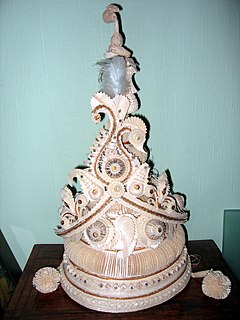 W
WA topor is a type of conical headgear traditionally worn by grooms as part of the Bengali Hindu wedding ceremony. The topor is typically fragile, made of sholapith and white in colour.
 W
WThe early Jain contemplated the nature of the earth and universe and developed a detailed hypothesis on the various aspects of astronomy and cosmology. According to the Jain texts, the universe is divided into 3 parts:Urdhva Loka – the realms of the gods or heavens Madhya Loka – the realms of the humans, animals and plants Adho Loka – the realms of the hellish beings or the infernal regions
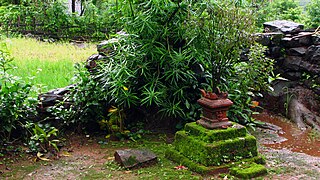 W
WTulasi Chaura or Tulasi Vrindavan is a small podium-like stone or cement construction in front of traditional Hindu houses containing Tulasi in many regions of India including Odisha
 W
WUttarapurana is a Jain text composed by Acharya Gunabhadra in the 9th century CE. According to the Digambara Uttarapurana text, Mahavira was born in Kundpur in the Kingdom of the Videhas.
 W
WVedic wedding ceremony is the traditional Indian Hindu wedding that includes Vedic yajna – rituals around agni, particularly the seven vows before the fire, with the hymns from the Vedas. The roots of this tradition are found in hymn 10.85 of the Rigveda, which is also called the "Rigvedic wedding hymn".
 W
WVillu Paatu, also known as Villadichampaatu, is an ancient form of musical story-telling in India where narration is interspersed with music, an art of southern states of Tamil Nadu and Kerala, as well as North-East Sri Lanka. This art form is popular among Nadar and Ezhava castes of erstwhile Travancore kingdom. Simple tunes and verses make the story easy to follow. The villu (bow), the age-old weapon of warriors - paradoxically lends itself to be used as a primary musical instrument for the Villu Paatu artists.
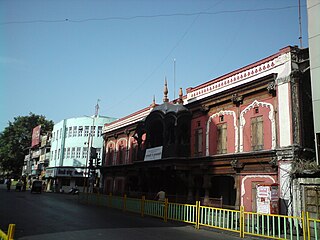 W
WA wada (Marathi) or wade (Kannada) is a traditional mansion house form usually found in North Karnataka and Maharashtra. Wadas were the epicentres of administration in North Karnataka and of Maharashtra.